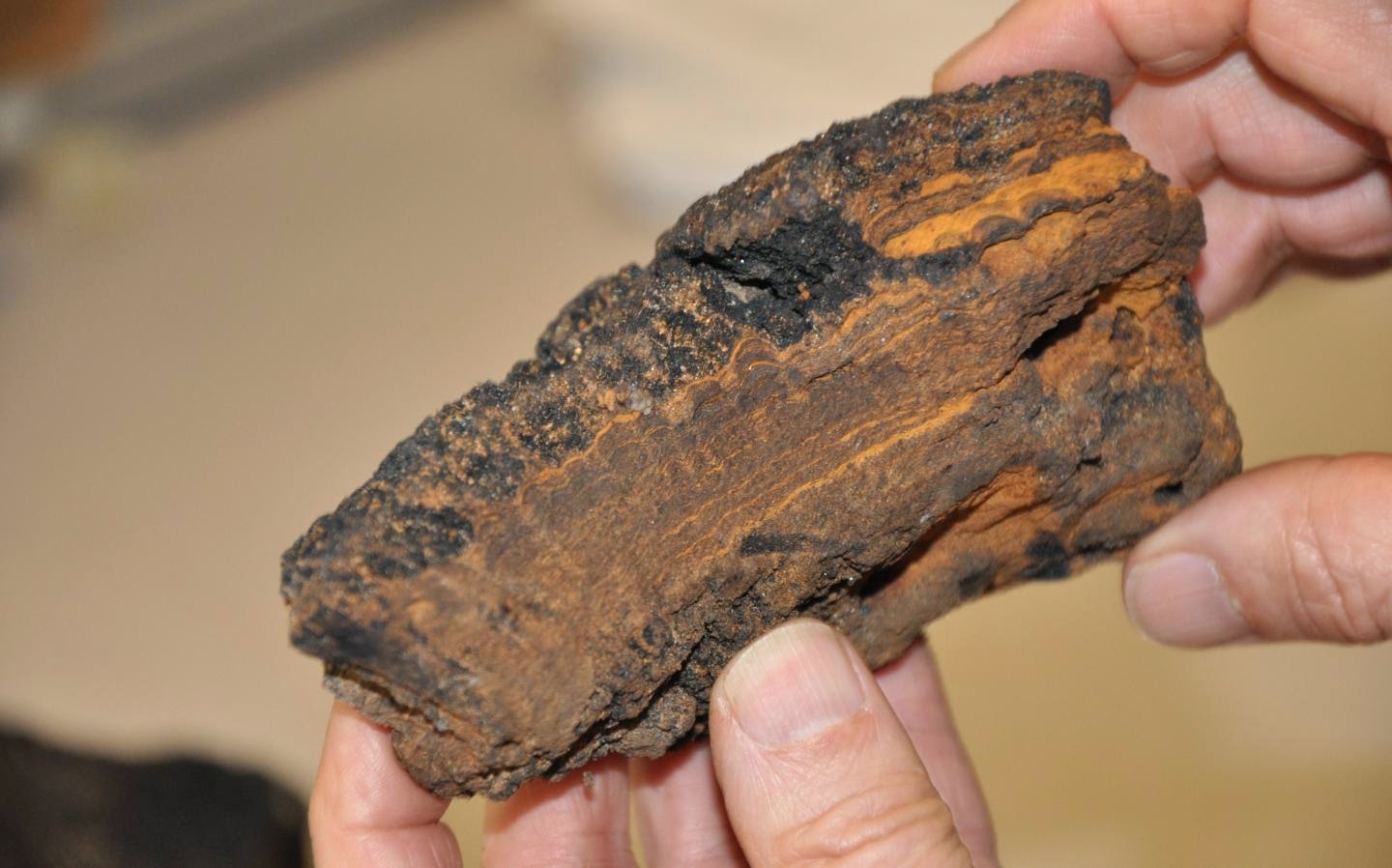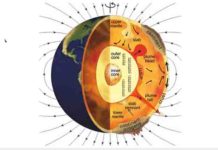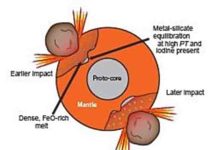
In the past decades ferromanganese crusts have been the focus of interest due to their resource potential of valuable metals such as cobalt, nickel or rare earth elements, which are highly enriched in these crusts. For the moment, however, the cost of underwater mining outweighs their cost of recovery. Future price development will change this and deep-sea mining may one day become profitable. In their new study, the German marine scientists show that their metal content is not the only value of these crusts but that they are also archives of past climate changes.
Ferromanganese crusts are up to 26 centimeters in thickness showing laminated growth, comparable to tree rings, but on a much longer time scale. Crusts grow at incredibly slow growth rates of only a few millimeters per million years. Forming on the summit and slopes of submarine mountains these chemical sediments thus record changes in ocean chemistry reflecting the evolution of ocean currents and climate on the continents over the course of millions of years.
But how is the information stored in the crusts? The main ultimate sources of chemical substances in seawater are the rocks of the continents. Weathering erodes and dissolves the rocks and transfers the chemical components to the oceans. Some of these substances inherit the “geochemical fingerprints” of their source regions and travel around the globe together with the ocean currents. Changes in climatic conditions, such as the emergence of large-scale glaciations on the continents during the ice ages, have led to a change in the chemical composition of seawater. The huge ice shields grind the rocks more efficiently and release greater amounts of certain chemical compounds to the oceans. “This is how we can track how the conditions on glacial North America changed during the establishment of large past glaciations”, Veit Dausmann, lead author of the study, points out.
Three ferromanganese crusts from water depths between 2200 and 3600 meters were analysed in the study. The specimens are only a few centimeters thick and were recovered from the Canada Basin of the Arctic Ocean during a cruise of U.S. Coast Guard icebreaker Healy in 2005 to explore the US Exclusive Economic Zone in the Arctic Ocean. “Seven million years of the ocean’s past are archived in these crusts”, states James R. Hein, Santa Cruz-based geologist at the USGS and co-author of the study. The ages were determined using the naturally occurring radioactive isotope beryllium-10 at ETH Zurich.
The time series of the geochemical fingerprints show that due to the sluggish mixing of deep waters in the Arctic Ocean, changes in climatic conditions on land have left a particularly distinct record.
The new data show that approximately four million years ago large climatic changes started to emerge that promoted increased glaciation of North America. Since one million years ago this effect has even been amplified in response to the drastic alternations between warm and cold phases of the ice ages. “Deciphering the climatic records preserved in these ferromanganese crusts closes a large gap in our knowledge of the Arctic regions’ past” explains Martin Frank, professor at GEOMAR and co-author of the study. “Due to harsh conditions and inaccessibility of Canada Basin’s long sedimentary records, our commonly used archives of long-term climate change, have not up to now been available.”
Reference:
Dausmann, V. M. Frank, C. Siebert, M. Christl, and J. R. Hein, 2015: The evolution of climatically driven weathering inputs into the western Arctic Ocean since the late Miocene: Radiogenic isotope evidence, Earth and Planetary Science Letters, 419, 111-124, ISSN 0012-821X, DOI: 10.1016/j.epsl.2015.03.007.
Note : The above story is based on materials provided by Helmholtz Centre for Ocean Research Kiel (GEOMAR).










